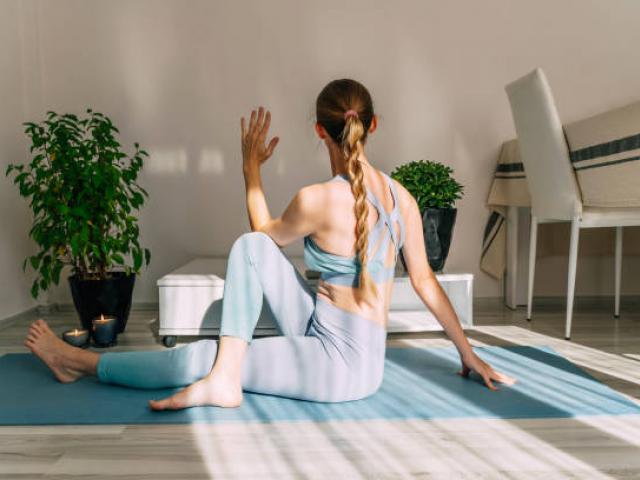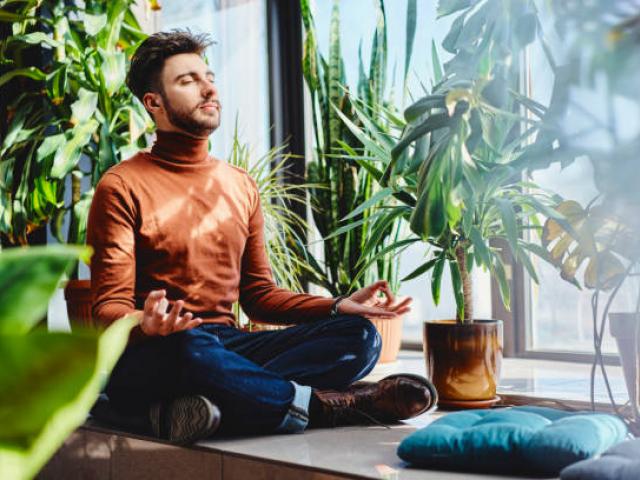Bringing balance
Yoga

The beginnings of yoga can be traced back to Northern India more than 5’000 years ago and the Indus-Sarasvati civilization. The word yoga was first mentioned in ancient sacred texts, the Rig Veda. The Vedas are a set of four sacred texts written in Sanskrit. The word yoga comes from Sanskrit, the root “yuj” meaning “to join” or “to unite.”
Yoga joins together the body, mind and spirit through postures, moving mindfully and focusing upon the breath. It has been shown to increase flexibility, develop balance, strength and coordination and improve mental wellbeing. There are differing types of yoga, ranging from strong and intense practices such as vinyasa and hot yoga, to those more calming and nourishing like restorative or yin yoga. Yoga has also been shown to assist in reducing blood pressure and pain levels, creating a state where body, mind and spirit are in balance with each other.
Pilates
Pilates is a form of low-impact exercise developed in the early 20th century by German physical trainer, Joseph Pilates, as a method of recovery for dancers. Pilates’ repetitive exercises are carried out using equipment like the reformer, or on a mat to develop flexibility, stability and strength. The muscular effort involved stems from the core. According to the PMA (Pilates Method Alliance), the core consists of four primary muscles: the pelvic floor, transverse abdominis (pelvic stabilizer), multifidus (spine stablisier) and diaphragm (the breathing muscle). Within the Pilates community there is not always an alliance regarding the principles of Pilates; their order and the number of them. However, there should be at least six: Centering, Concentration, Control, Precision, Breath and Flow.
Mindfulness and Meditation

A basic definition of mindfulness is being more aware of the present moment and engaged fully in your location and what you are doing, without judgement. Mindfulness can be practiced in any situation and action you take. It is making the effort to slow down to become aware of your body and your emotions. Mindfulness can evoke a feeling of relaxation and wellbeing, whether it is mindful eating, deeper breathing or walking.
The Japanese term shinrin-yoku means “forest bathing” or “taking in the forest atmosphere”. It is walking slowly in a natural environment and consciously noticing and connecting with the nature that is around you. It is breathing deeply and feeling relaxed and calm as you walk amongst trees, noticing the sounds and sights of your surroundings.
Mindfulness and meditation are closely linked. Meditation is stopping and setting aside time to train your awareness and attention. It needs to be practiced often and at its simplest can be sitting in a relaxed position, on a chair or on the floor, focusing upon the breath as it enters and exits your body, and noticing (again, without judgement) when your thoughts wander, bringing them back to the breath. There are many apps that have free content to assist beginners with mindfulness and meditation; they include Headspace, Calm, and Smiling Mind.
Mental Health Awareness Week
Mental Health Awareness Week will be held from Monday 18th to Sunday 24th September 2023. This year’s theme is “Five Ways, Five Days”. The Mental Health Foundation is asking New Zealanders to use the five ways below to improve their wellbeing throughout the week. The simple actions are backed by evidence and can easily be incorporated into anyone’s life, at any time. They are: Take Notice/Me aro tonu; Give/Tukua; Be Active/Me kori tonu; Connect/Me whakawhanaunga and Keep Learning/Me ako tonu. For further information, go to https://mhaw.nz/












